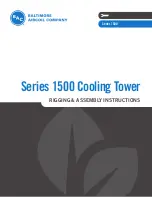
Do not mix substance other than the specified refriger
-
ant such as air into the refrigeration circuit.
If the refrigerant leaks during the work, ventilate the
room.
•
The refrigerant is pre-charged in the outdoor unit.
•
When connecting the pipings to the air conditioner, make
sure to use a spanner and a torque wrench as shown in
Fig. 10.
•
For the dimension of flared part and the tightening torque,
refer to the Table 2.
•
When making a flare connection, coat the flared inner
surface only with ether oil or ester oil.
(Refer to Fig. 11)
Then, turn the flare nut 3 to 4 times with your hand and
screw in the nut.
Torque wrench
Spanner
Flare nut
Union joint
Fig. 10
Coat the flared inner surface
only with ether oil or ester oil
Fig. 11
Table 2
Piping
size
(mm)
Tightening
torque
(N·m)
Dimension for
processing flare
A (mm)
Flare shape
f
6.4
15.7 ± 1.5
8.9 ± 0.2
R0.4-0.8
90°±2°
A
45°±2°
f
9.5
36.3 ± 3.6
13.0 ± 0.2
f
12.7
54.9 ± 5.4
16.4 ± 0.2
f
15.9
68.6 ± 6.8
19.5 ± 0.2
CAUTION
Do not have oil adhere to the screw fixing part of resin
parts.
If oil adheres, it may weaken the strength of screwed part.
Do not tighten flare nuts too tight.
If a flare nut cracks, the refrigerant may leak.
•
If there is no torque wrench, use Table 3 as a rule of
thumb.
When tightening a flare nut with a spanner harder and
harder, there is a point where the tightening torque sud-
denly increases.
From that position, tighten the nut additionally the angle
shown in Table 3.
After the work is finished, check securely that there is no
gas leak.
If the nut is not tightened as instructed, it may cause slow
refrigerant leak and result in malfunction (such as does
not cool or heat).
Table 3
Piping size
(mm)
Tightening
angle
Recommended arm length of
tool used
f
6.4
60° - 90°
approx. 150 mm
f
9.5
60° - 90°
approx. 200 mm
f
12.7
30° - 60°
approx. 250 mm
f
15.9
30° - 60°
approx. 300 mm
CAUTION
Insulation of field piping must be carried out up to the
connection inside the casing.
If the piping is exposed to the atmosphere, it may cause
sweating, burn due to touching the piping, electric shocks or
a fire due to the wiring touching the piping.
•
After leak test, referring to
Fig. 12, insulate both the gas
and liquid piping connection with the attached joint in-
sulating material (8) and (9) to prevent the pipings from
getting exposed.
Then, tighten the both ends of insulating material with the
clamp (4).
•
Wrap the sealing material (Medium-1, 2) (11) (12) around
the joint insulating material (8) and (9) (flare nut section),
both the gas and liquid piping.
•
Make sure to bring the seam of joint insulating material (8)
and (9) to the top.
7
3P335596-2D English






































